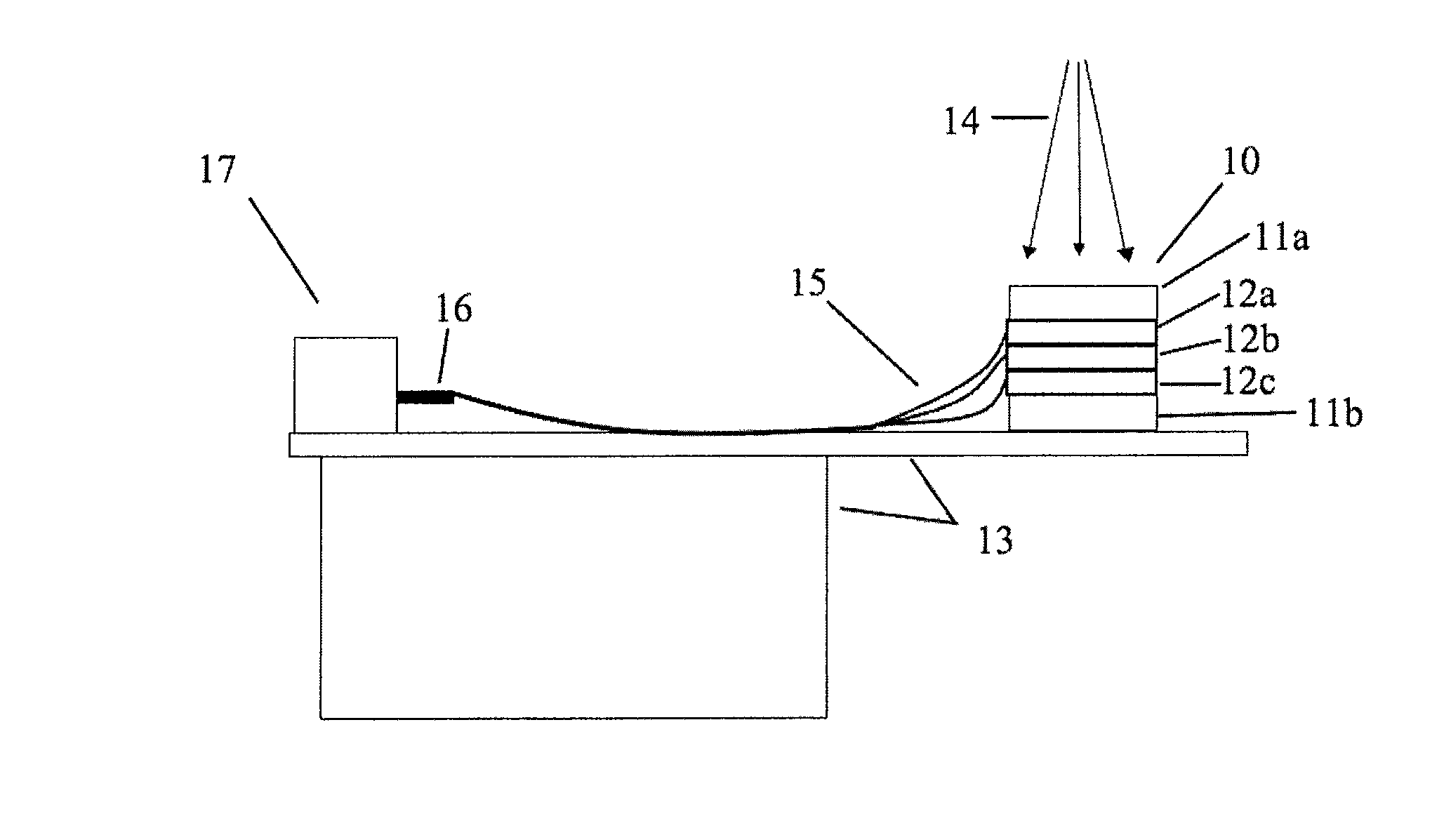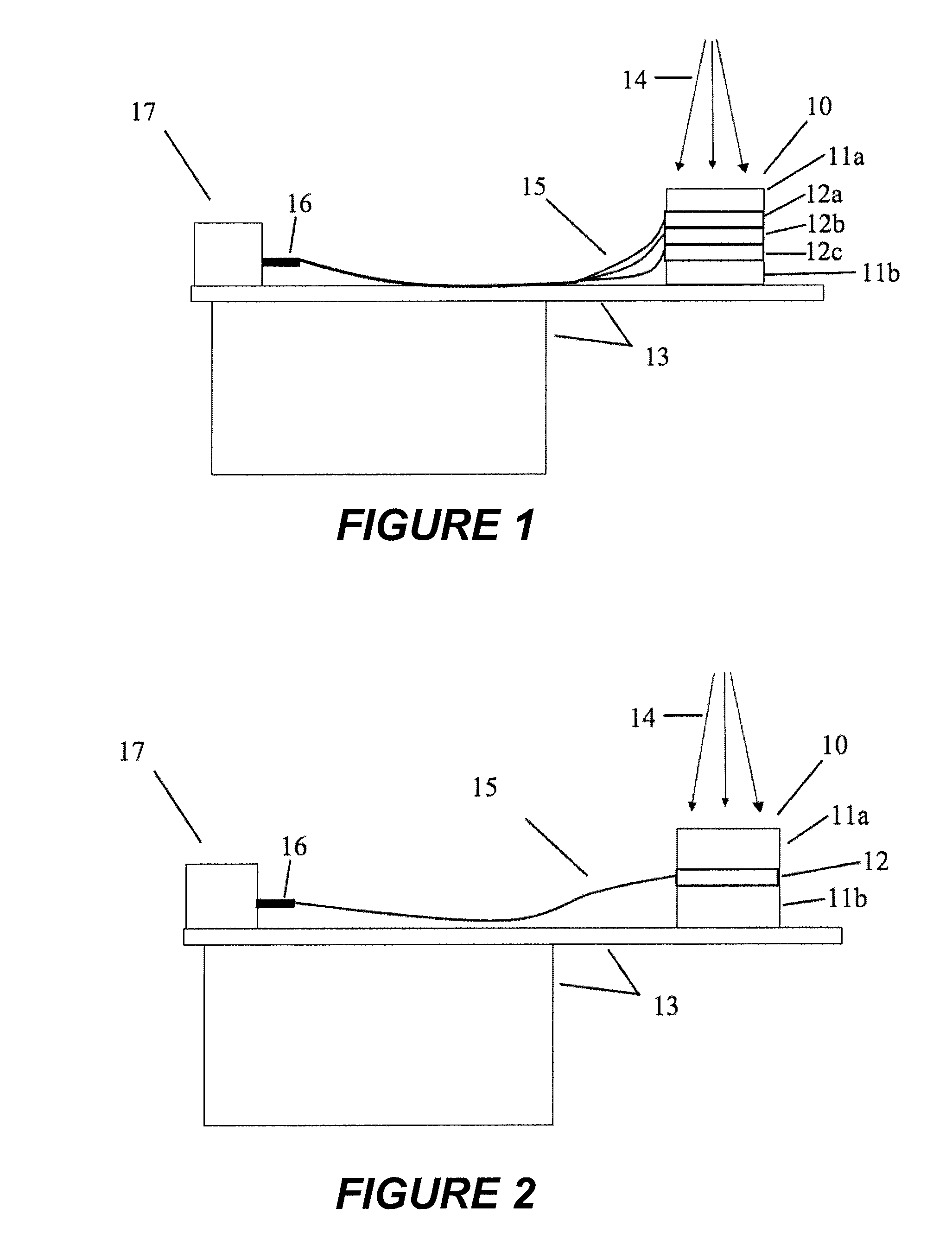Scintillating fiber dosimeter array
a fiber dosimeter and fiber array technology, applied in the field of dosimetry, can solve the problems of inability to use online assessment, affecting film response, and subject to drawbacks
- Summary
- Abstract
- Description
- Claims
- Application Information
AI Technical Summary
Benefits of technology
Problems solved by technology
Method used
Image
Examples
Embodiment Construction
[0031]The present invention provides a dosimeter that makes use of scintillating optical fiber detectors. In an exemplary embodiment of the invention, miniature plastic scintillating fiber detectors are used that have a unique combination of properties. Their water equivalence is maintained over a broad energy range (e.g., 0.2 to 25 MeV). Furthermore, they provide a highly sensitive medium, which enables small sensitive volumes (e.g., less than 2 mm3) and high resolution, linearity to dose, dose rate independence, energy-independent response, and real-time readout.
[0032]Shown in FIG. 1 is a scintillating fiber dosimeter array according to the present invention. The dosimeter is located on a radiotherapy treatment table 13, a phantom component 10 being composed of a series of water-equivalent modular slabs. Slabs 12a, 12b and 12c have scintillating fiber detectors embedded in them, while slabs 11a and 11b do not. While five slabs are shown in the embodiment of FIG. 1, those skilled i...
PUM
 Login to View More
Login to View More Abstract
Description
Claims
Application Information
 Login to View More
Login to View More - R&D
- Intellectual Property
- Life Sciences
- Materials
- Tech Scout
- Unparalleled Data Quality
- Higher Quality Content
- 60% Fewer Hallucinations
Browse by: Latest US Patents, China's latest patents, Technical Efficacy Thesaurus, Application Domain, Technology Topic, Popular Technical Reports.
© 2025 PatSnap. All rights reserved.Legal|Privacy policy|Modern Slavery Act Transparency Statement|Sitemap|About US| Contact US: help@patsnap.com



